How to Visit Ireland as an American
If you’ve always wanted to see the Emerald Isle but want more insider info on how to visit Ireland as an American, you are clearly in the right place.
Take it from an Irish person now living in the United States, my darlings. I’ve got you! I tried to collect the most important info that will leave you feeling prepared and excited about your trip. So settle in, enjoy, and feel free to ask me any additional questions that pop up.
TABLE OF CONTENTS
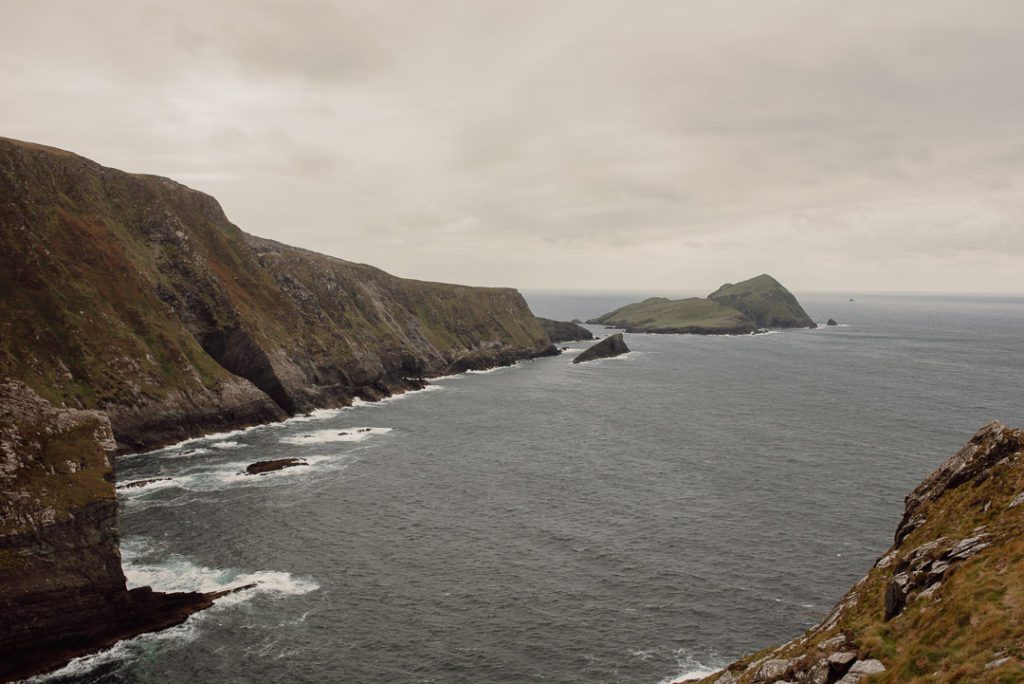
Best Travel Tips
Whether you’re traveling to Ireland or some other long-haul destination, actually getting there is part of the adventure.
So to kick off this guide on how to visit Ireland as an American, I thought we could start with the travel side of things.
Packing Light
This one is polarizing, and I feel strongly about it on a personal level. If you like traveling with a lot of things and have no worries checking a bag, live your best bag-check life. If you can’t remember the last time you checked a bag or want to live that life…read on.
WHY PACK LIGHT
Especially given the current state of travel, checking a bag is a risky business. Losing a bag can really disrupt your trip and leave you feeling unsettled, not to mention stressed and glued to any available wifi for news of your missing luggage. Now, if you’re traveling for a wedding, carry-on travel is possible but may not work out, depending on your outfits and the level of cooperation from your airline. For more on how to travel with wedding clothes, you can read my Ireland Elopement Guide.
THE ESSENTIALS
When packing light, don’t think about how long you’ll be away. If you’re going to be traveling for 10 days or 10 weeks, you can travel with the same size bag–laundry is allowed!
When traveling to Ireland, your wardrobe should consist of layers to handle the ever-changing weather. Here’s what I usually reach for:
CLOTHING:
- One good pair of jeans. Maybe two if I have the space (e.g. one black, one blue)
- One pair of black leggings
- A pair of shorts if I’m feeling very optimistic or the forecast right before my flight says so
- Underthings + socks
- Five t-shirts
- Three long-sleeved shirts
- One light sweatshirt
- One hoodie (worn on the plane)
- One raincoat (I use a super light one that folds down small)
- Boots (worn on the plane)
- Converse
TOILETRIES:
- Toothbrush + toothpaste
- Face wash
- Shampoo + conditioner bars (for my dry, wavy hair)
- Moisturiser
- Sunscreen
- Makeup
“ETCETERA“
- One camera + lens (If I’m not working; if I have clients, there’s more camera gear)
- Film camera + a few rolls of film
- Journal + pens
- Kindle
- Headphones
- Various chargers
- 1L water bottle
- Coin purse
- Wallet
- Passport
- Small first aid kit
Again, this is just what I pack. Bring what works for your lifestyle. I put together a quick video on what I packed for my most recent trip; you can watch it here if you’re interested.
Most Common Flights
This section may seem superfluous because you fly from the airport closest to you, right? Ireland is a pretty small island, though, so even if you’re headed to Cork, flying to Dublin may be a better travel option for you, either for time, cost, or both.
One of the biggest considerations (especially if you’re not checking a bag) is the carry-on allowance. On my last trip, I stopped in Wales to see the in-laws first, and that little hop from London to Cork was a nightmare: 10kg (22lb) limit for my carry-on. Not cool.
DIRECT FLIGHTS
From the U.S., there are several major cities that have direct flights to Ireland.
Direct flights mean more time on the plane in one sitting, but you get to your destination faster. There’s also less worry about layovers and delayed flights. If you’re lucky enough to have a direct flight available near you, I recommend it!
LAYOVER FLIGHTS
Depending on where you’re going, you may have to make a few stops. Cork Airport, for example, is the second largest in Ireland, but it’s still quite small, handling less than 10% of Dublin Airport’s passenger volume in 2019 (pre-you-know-what).
Poke around the various options! You may be surprised which routes end up being the easiest or cheapest. Sites like Skyscanner are great for this.
Time Zones and Jetlag
*Typical disclaimer: things that work for me may not work for you, and things that I don’t do may work wonders for you.
According to the grand old internet, you need one day of adjustment for every time zone you pass through to be fully back on your usual schedule. Ireland is 8 hours ahead of the west coast of the U.S., and 5 hours ahead of the east coast. Most people aren’t interested in spending a whole week getting acclimated, so here are some jetlag tips that have worked for me:
START ADJUSTING BEFORE YOU LEAVE
Not everyone has the flexibility (or desire) to do this, but it helps! A week before your trip, start waking up an hour earlier. Then maybe add another hour. Your schedule (and the delicacy of your insides) will dictate how far you can push this, but starting the adjustment process ahead of time can save you a few days of brain fog.
USE AN EYE MASK
I was skeptical of this one at first, but now I swear by it. Despite never using eye masks at home, I always travel with one. Ireland is far enough north that summer days can be pretty long, and sunrises and sunsets are more drawn out than they are at lower latitudes. Using an eye mask will help you get the sleep that you need.
GET OUT IN THE SUNSHINE FIRST THING IN THE MORNING
Our bodies use natural light throughout the day to regulate hormones responsible for sleep. I know we all hate hearing “stop scrolling on your phone at night for better sleep,” but…it’s important. Especially when jetlagged. Put your phone away before bed, and opt for daylight rather than a screen first thing in the morning.
TRY NOT TO NAP
This one is difficult, but as best you can, try to stay awake during the day. Long-haul flights to Ireland and UK often arrive in the morning local time. It can be a little jarring, but try to stay awake all day. Have some breakfast (“breaking your fast” is another indicator to your body that it’s the morning) and try to stick to as normal a schedule as you can.
CHANGE YOUR WATCH & PHONE ON THE PLANE
On the last big leg of your trip, change the time on your watch and phone to wherever you’re going. Stop thinking about the time zone where you live. So instead of thinking, “it’s 11 am back home,” think, “it’s 7 pm, and I should be eating dinner.”
GIVE YOURSELF SOME TIME
Especially if you’re getting married in Ireland, give yourself a few days before your wedding to adjust. Flying in the day before is a recipe for exhaustion and headaches on your wedding day, not to mention the risk of missing it entirely if there’s a travel delay. If you can, fly early, then take it easy the first few days.

Budgeting
Your travel budget is yours to decide. It’s none of my business what you should spend money on, or how much. This section is about what you can expect to spend money on. Things tend to add up when traveling to the other side of the world, so doing a little research ahead of time is a good idea.
At the end of the day, traveling from the U.S. to Ireland can be done in so many ways, on so many budgets, so travel in a way that works for you.
Timing
Carry out an experiment: get onto Google Flights, put in the airport near you, and pick an airport in Ireland. Open up the date picker and scroll through the months, keeping an eye on the prices under each date.
You should notice that–ignoring flights on super short notice that are usually very expensive–the prices fluctuate up and down. The winter holidays and early-to-mid summer are when most people tend to visit Ireland, so prices across the board are going to be higher. And that goes for flights, lodging, and car rentals.
Changing Currency
Switching to a different currency can be a “travel cost” depending on how you do it.
CHECK THE CONVERSION RATES
Keep an eye on conversion rates leading up to your trip. At the time of writing (mid-2022), the euro and the U.S. dollar have been hovering around a 1:1 conversion. I do remember several trips home with a strong euro, which meant my dollar didn’t go nearly as far. If that’s the case when you travel, you may have to be more mindful of your spending, depending on your budget.
That being said, whatever the conversion rates are, I don’t recommend withdrawing U.S. dollars from an ATM and then converting them to euros at one of those kiosks in the airport. The rates are always worse!
CARRY CASH
It’s more common in Ireland to carry and use cash than in the U.S., but most places still prefer a credit card. I recommend using one without foreign transaction fees, for obvious reasons. Otherwise, withdraw cash from an ATM for a one-time fee. Certain places will take coins only for parking, which is a tiny bit annoying. One other thing to note about cash is that paper bills can be converted back to U.S. dollars, but coins cannot. If I have a few extra euros in coins at the end of my trip, I either tuck them away for next year or get myself some chocolate or a book for the flight home.
PAY ATTENTION WHEN CROSSING BORDERS
One island is home to two different countries: the Republic of Ireland and Northern Ireland. Ireland uses the euro, but Northern Ireland is part of the United Kingdom and uses the pound sterling.
Flights
Plane tickets can be extremely variable, so keep an eye on the prices! You can set up an alert with Google Flights to track pricing for specific routes. At the time of writing (mid-2022), I’m seeing average prices anywhere from $500-1000 from San Francisco, and ~$400-700 from New York.
Lodging
Lodging is variable too, depending on how you want to travel. From historic hotels to quiet BnBs, your lodging expenses can be minor to extravagant based on the type of experience you’re looking for. This will also depend on your location: the heart of Dublin city is going to cost you more than the middle of nowhere. On average, I’ve seen ~$60-175/night.
Car Rentals
Ireland has pretty good public transportation, but sometimes hiring a car just makes more sense. If you’re planning on staying in the city or just taking some day trips, the trains and buses (and a lot of walking) will suit you just fine. If you’re going to be in some of the more far-flung places or heading for certain hiking trails, or maybe you just want more autonomy, get the car!
Much like everything else, prices are variable depending on the season. Supply and demand, friends.
AUTOMATIC VS MANUAL
If you’re going to visit Ireland as an American, one of the most important things to know is that most of the cars there are manual. I’m sure plenty of you are comfortable driving a stick shift, but it’s not the norm in the States. If you need an automatic car, book one earlier rather than later; they’re in short supply. The automatic will cost you more than the manual.
GASOLINE (Petrol)
It’s not that petrol in Ireland is expensive, it’s that petrol in the United States is relatively cheap. Expect to pay a few dollars more per gallon in Ireland, and when you’re looking up prices, you’ll have to convert euros per liter into dollars per gallon. Or use that handy website I linked for you.
You’re also more likely to drive a car that runs on diesel in Ireland than you are in the States. Fun twist though: the pump colours are different. In the States, the green pump is diesel. In Ireland, the green pump is unleaded. Do not mess that up.
Food
Average supermarket food prices in Ireland are a bit lower than prices in the U.S. If you stay somewhere with a kitchen and can cook, you’ll spend less on food. Eating out at restaurants all the time will obviously cost you more, so if you’re on a budget, you can factor that into your lodging choices. One thing to note is that tipping in Ireland is different than in the States: if your restaurant bill includes a service charge, you don’t need to worry about a tip. Otherwise, 10-15% is nice. If you can, leave the tip in cash to make sure it goes to the server.
Cafés don’t require tipping but may leave out a bowl or jar by the register. Tipping in bars will get you very funny looks.
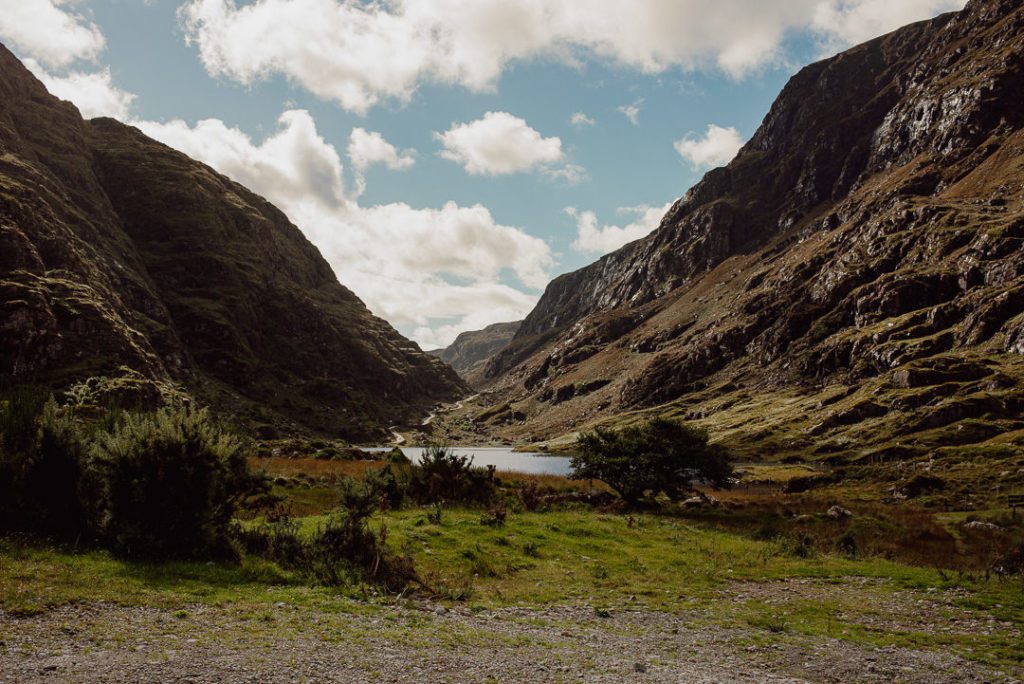
Irish Culture and Customs
I can’t get into everything, but there are a handful of things that I want to lay out for you as either cultural differences or random Irish info:
If you find yourself in a pub with some locals, groups of people often take turns buying a round for the whole table. So if there are four of you, each of you will buy a round and end up with four drinks. If it’s your turn, it’s “your shout.”
Food portions are smaller in Ireland than they are in the States.
When driving on rural roads, acknowledge any oncoming driver, especially if one or both of you has to squeeze over on the narrow road to pass by. The “raised hand wave” is nice, but even lifting your finger from the steering wheel is enough. It’s considered rude to ignore people.
On that note: rural roads are subject to sheep-and-cow-related chaos. They get moved between fields, and that can take a while, so give yourself some extra time. You may also get stuck behind a tractor, but they’re often courteous enough to pull in and let you pass when they get the chance.
I won’t write out every word of Irish slang; I doubt I know all of it. Some common phrases I’ve seen confuse folks on their first visit to Ireland as an American:
- Craic. It’s pronounced “crack” but has nothing to do with drugs (usually). “What’s the craic?” means “what’s happening?” “It was good craic” means “it was a good time.”
- “Yer man.” This is in reference to a person. You’ll hear people say, “Who’s yer man over there?” They’re asking who that person is, not referring to them as your man.
- The boot: the trunk of the car
- Car park: parking lot
- Footpath: sidewalk
- Mad: bonkers, not angry
- I will, yeah: I will not
If you have questions about what on earth people are saying, ask away and I’ll do my best!

Driving in Ireland
There are a handful of things you need to know about driving in Ireland.
For starters, both the cars and the roads are smaller (on average) than those in the States. Out in the countryside, passing is fairly common, just be safe and smart about it.
On the topic of safety: slow the hell down. I don’t care what the speed limit says, pay attention to the actual road. There are hedge-lined curves on very narrow roads, and you’ll often have to slow down and pull into the side to let someone pass. And remember those cows and sheep we talked about…?
The most important thing to know about driving if you’re going to visit Ireland as an American is that you have to drive on the left side of the road.
Ireland is also full of roundabouts, or traffic circles. Some of you may have a few where you live, but the U.S. isn’t big on them yet. Some of the largest ones have traffic lights**, but for the majority, you don’t have to stop, just yield. Traffic already inside the roundabout has the right of way.
Roundabouts are one way only. Because you’ll be on the left side over there, you’ll be moving clockwise. If you have to turn right, you have to go 270 degrees clockwise around the circle, you can’t cut against traffic.
And finally: most road signs will be written in both Irish and English.
**If you fly into Cork airport and head east on the Kinsale road, be prepared for a monster of a roundabout. It’s difficult to explain, but everyone who’s been through there knows which one I’m talking about.
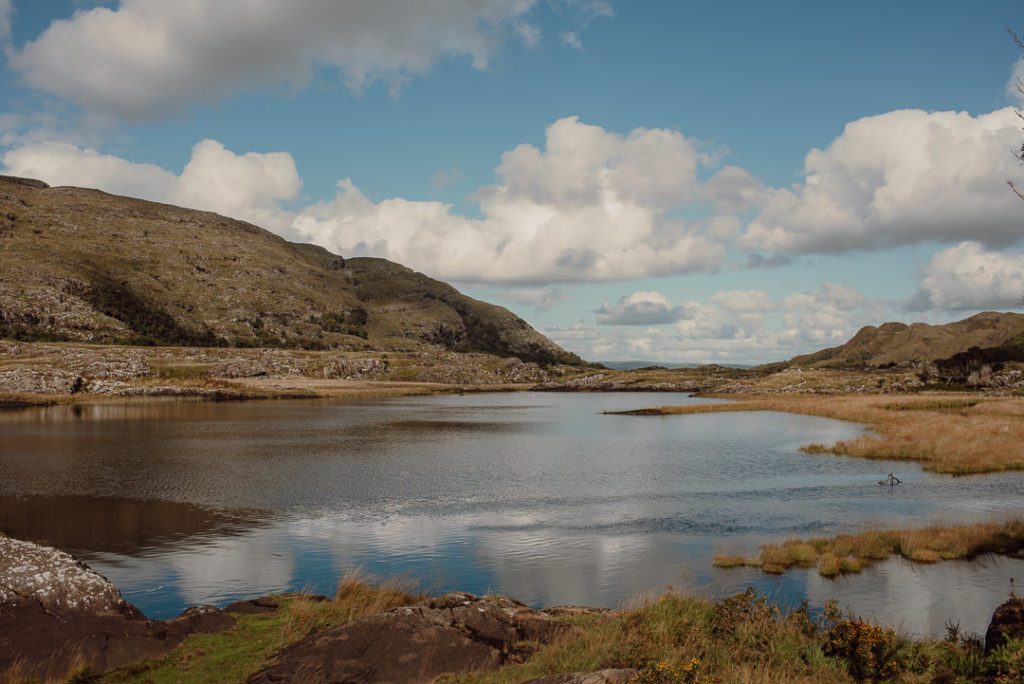
Things to Avoid
My preference is to keep things positive.
Sometimes we need to talk about things not to do, though. I’m not attacking anyone, just providing you with some information about a different culture that you may not know! This is me helping you have a better trip and a better experience.
Yelling About Politics
Although 99% of the country will be extremely friendly with you, the Irish already have a general perception of Americans as being loud and crass. Not that everything in the British Isles is rosy, but American politics is bananas, and plenty of people around the world think so. Enjoy your trip! Leave the angry politics at home, justified though the yelling may be.
Certain Drinks
Don’t make me actually type this one out, because I have a feeling Google will put a bright red flag on this page if I do. You know the one I’m talking about: it’s a cocktail wherein whisky is floated on top of Irish cream in a shot glass and then dropped into a pint of stout.
The thing is: the name of that drink is extremely offensive. Look up the history if you don’t know it. The short version is that for about 30 years (from the late 1960s to 1998), there was a lot of violence, and the name of that drink describes real things that happened to real people.
Don’t order one.
Another drink that you don’t want to order is a “Black and Tan.” Again, feel free to look this one up on your own, but basically, the name refers to the improvised uniforms of the Royal Irish Constabulary, recruited during the Irish war of independence. They were violent and horrible, so again, don’t order this one. You can order what I believe is the same drink by another name: a half and half.
Watch Your Mouth
If I hear of any one of you flying over to Ireland and saying “top of the morning” to a single person, I will find out and berate you.
No one says that. Please do not say it to locals with a fake accent, they will not enjoy it.
Stinging Nettles
In the U.S., you probably worry about poison oak and poison ivy when you’re out hiking or camping. In Ireland, you need to watch out for stinging nettles. The leaves are heart-shaped and taper to points. The plant is covered in stiff hairs, mostly under the leaves and on the stem.
Try Not to Take Offense
Now hang on a second, don’t judge me too quickly. I’m not calling anyone a “snowflake.” (I’m sensitive as hell, and the “snowflake” thing drives me up the wall.)
I’d just be remiss if I didn’t include a section on Irish banter and general communication. This honestly took me a long time to write, because it’s difficult to convey exactly what I mean without you having experienced it.
What the Irish are not: rude people who say hurtful things and then tell you, “toughen up, it’s just a joke.” Or those people who say something horrible and then follow it up with, “what, I’m just being honest.”
What the Irish are: folks who love small talk, truly do not care if you claim “12.5% Irish ancestry” (you’re American), move on Irish time (slowly), won’t hold back on the America jokes, and tread into a more “offensive” realm with their friendly banter than Americans are generally comfortable with.
Basically: the endearing way that the Irish communicate with each other shouldn’t be taken as anyone trying to hurt you. It’s just how things are, and people don’t mean anything vicious by it.
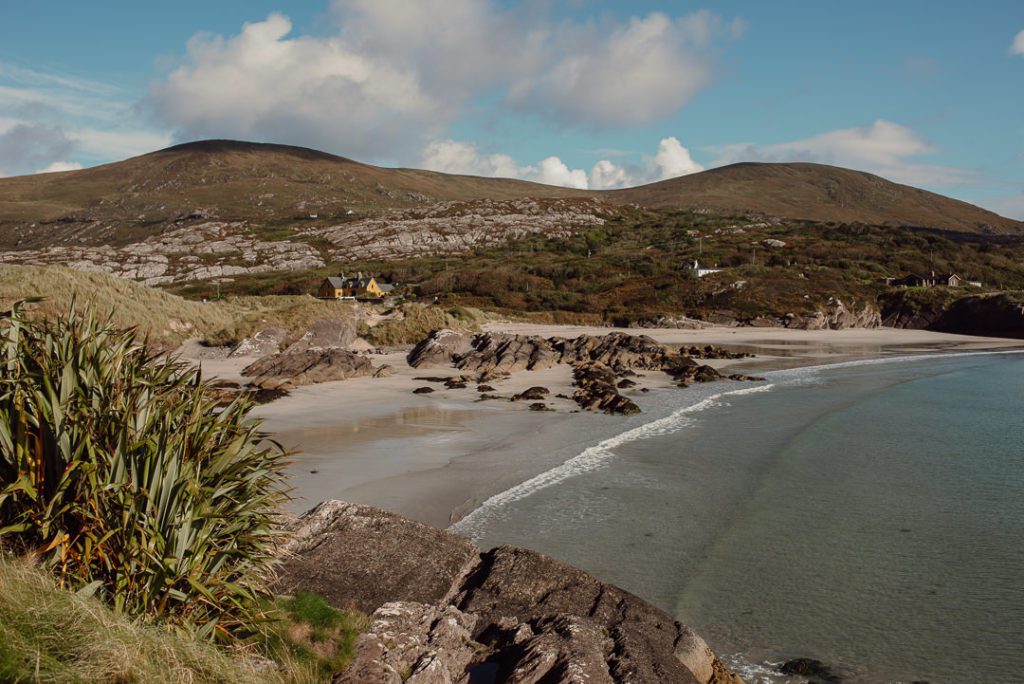
Touristy Things That Are Actually Good
If you’re the same type of traveler that I am, then super busy “tourist traps” are not your idea of a good time. If you’re looking for something to do, these are the more touristy things that I’ve actually found to be good:
- Visit the Cliffs of Moher
- Take a “hop on hop off” bus tour in the city
- Most guided walking tours
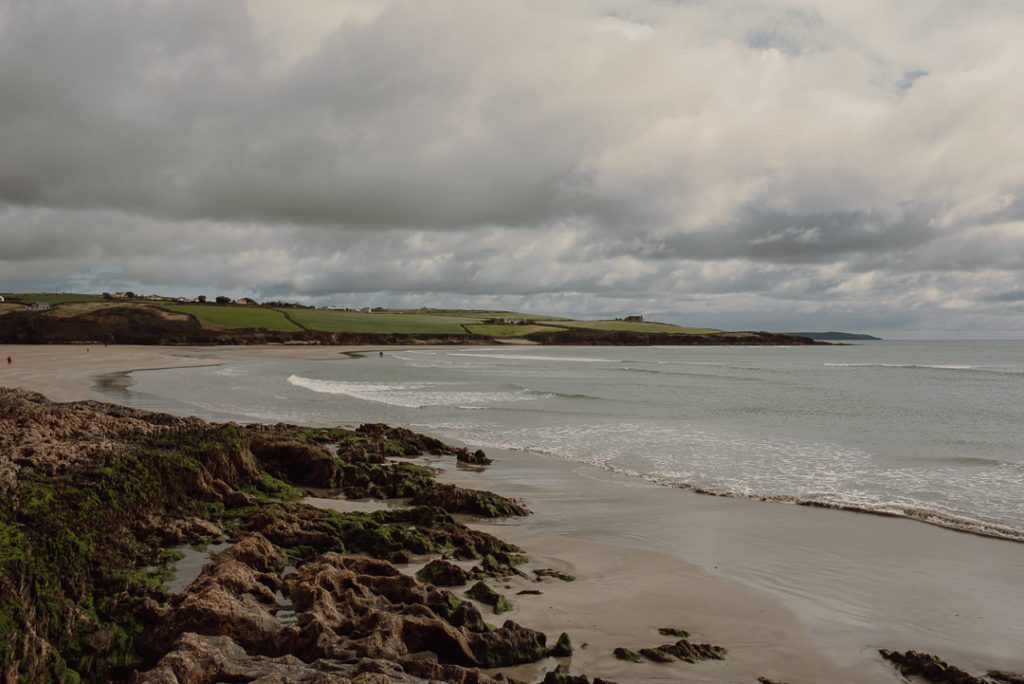
Get Married During Your Visit to Ireland as an American
As an American, you can absolutely get married in Ireland.
My recommendation, though, is that you do all the legal paperwork at home. Getting married in Ireland is a wee bit more complicated than getting married in the United States, and you’ll have to jump through a few more hoops. The way I see it, your wedding day is the day you celebrate, not the day you sign paperwork.
If all of that sounds good to you, I’m happy to help make it happen! I’m a Washington-based photographer but travel home to Ireland every year in the late summer. You can read more about Ireland Elopement Packages here and get the Ultimate Ireland Elopement Guide to answer your wedding-specific questions.
You can also reach out to me directly via my contact page, or by email: hello@solarroseco.com
Leave a Reply
Previous Post
Next Post
[…] I live in the U.S. myself, but having been born in Ireland and made countless trips home, I’ve got a unique perspective that comes in handy. I was going to list out all the helpful things I could think of for Americans here, but there’s just too much for one Ireland elopement guide. There’s now a whole separate article specifically for things Americans should know: click to learn more about eloping in Ireland as an American! […]
[…] For more of my best travel tips, read all about “How to Visit Ireland as an American.” […]
[…] How to Visit Ireland as an American […]